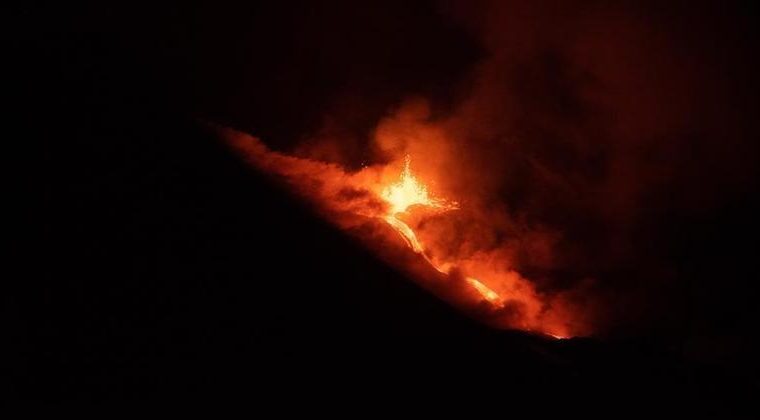
This Thursday (25th), there was a new lava flow at the Cumbre Vieja volcano on the island of La Palma in Spain, reaching a graveyard and a photovoltaic solar plant. The volcanic activity began more than two months ago, on 19 September.
The Molten Rock River emerges early in the morning and descends parallel to the tenth recorded flow, moving towards an area already empty of homes and plantations, as noted by Miguel ngel, technical director of the Special Plan for the Conservation of Volcanic Risk Morkuende explained. Canary Islands (Pevolka).
According to the expert, the new lava river is said to be “bad news” because it is reaching areas that were not previously affected and “destroying everything in its path” despite a recent decrease in speed.
Researchers and technicians are monitoring the flow that began today and will meet to analyze the trajectory.
In addition, according to Morkuende, an increase in the rate of lava emissions is being observed, with greater impact of the channels.
As for the seismic activity, the earthquake with the greatest intensity ever recorded today was 3.9 degrees on the Richter scale, at a depth of 11 kilometres.
Tremors continue at low levels, and the ground shows no signs of significant deformations.
The rate of carbon dioxide emissions associated with the eruption is still thought to be high at 30,000 tonnes per day, although a declining trend remains on 23 September this year, four days after the start of activity.
In the last 24 hours, high amounts of gases were detected in the air in the areas of Las Manchas and La Bombilla, in the exclusion zone created around Cumbre Vieja. Conditions are considered good or very good in the rest of the islands of La Palma.
As of the most recent update, 1,484 buildings have already been affected by the volcanic lava, of which 1,195 are for residential use, 160 for agricultural use and 67 for industrial use.
Altogether 340.59 hectares of different types of crops were affected.



